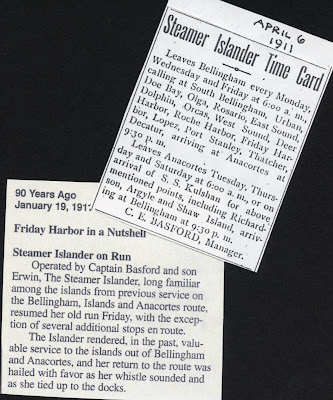Olin J. Stephens II, America's preeminent yacht designer of the twentieth century was honored with the opening of a special exhibit at Mystic Seaport in 2008. He was a longtime friend and supporter of the Museum. It is housed in the Cruising Club of America's Olin J. Stephens II Reading Room in the Museum's G.W. Blunt White Building. It opened to the public in celebration of Stephens 100th birthday in 2008.
Widely recognized as the most respected, admired, and accomplished yacht designer of the 20th century, Stephens once said, "I was lucky, I had a goal. As far back as I can remember, I wanted to design fast boats." And this is exactly what he did. He began his career at the age of 19 working as an apprentice for successful 6-meter yacht designer Phillip Rhodes. On 11 November 1929, the 21-year-old Stephens joined forces with well-known yacht broker Drake Sparkman and Sparkman & Stephens, Inc., was formed.
 |
Winning Yawl DORADE 4 July 1931 Newport, RI, just before the start of the Transatlantic Race to Plymouth, Eng. Acme Photo original photo from the archives of Saltwater People Historical Society© |
The naval architecture and yacht design firm's first major design — a yacht named Dorade — won the much-publicized 1931 Trans-Atlantic Race. She then went on to win the 1936 TransPac, finishing first in class and first overall. A new era of yacht design had begun.
Stephens's name is most often associated with the prestigious America's Cup Race. In 1937, he collaborated with W. Starling Burgess to design the Super-J, Ranger, which was later selected to defend the Cup after only seven races. Sparkman & Stephens went on to design many of the most revered 12-Meters that raced for the Cup, including Columbia, Constellation, Freedom, Intrepid, and Courageous. In 1993, Stephens and his winning designs were honored when he was inducted into America's Cup Hall of Fame.
When not designing yachts, Olin Stephens and his colleagues spent their time designing all other types of boats — from amphibious assault vehicles and patrol craft for World War II— to timeless vessels such as Mystic Seaport's own schooner yacht Brilliant. He also proceeded to give himself to the sport well beyond his professional activity. Stephens has been a member of the New York Yacht Club since 1930 and also a member of, or consultant to, the International Yacht Racing Union Keelboat Committee since 1963. He headed the committee which developed the International Offshore Rule and was active in the creation and maintenance of the International Measurement System.
Stephens was honored with numerous awards throughout his career which have recognized his indelible contributions to sailing. On 15 November 2006, Mystic Seaport named him the first recipient of the Museum's prestigious America and the Sea Award — an honor that recognizes individuals who have demonstrated outstanding achievement in the maritime world. "This award honors and celebrates America's relationship to the sea and the spirit of exploration, adventure, competition, and freedom that inspires us all. Olin embodies everything this award symbolizes," said Douglas Tesson, Museum president and director.
Stephens designed more than 2,000 boats throughout his career, many of which still grace the water today. After eight decades of brilliant work, he left a lasting impact on the maritime community. His numerous designs, contributions, and commitment to the worlds of yacht racing and cruising are cherished, as was he.
Newsletter from Mystic Seaport. Sept. 2008.
Olin J. Stephens wrote his autobiography, All This and Sailing Too, in 2000.
When the Stephens family sold Dorade, she came to the west coast of the US and kept sailing, very well indeed.












